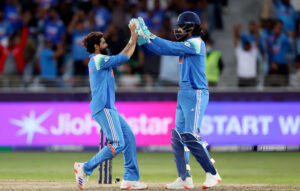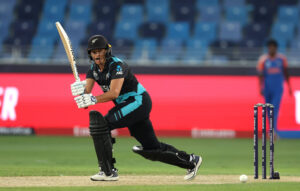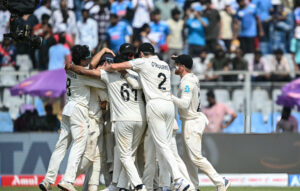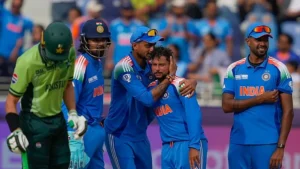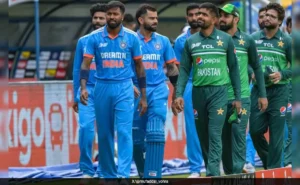Powerplay Cricket Rules Explained
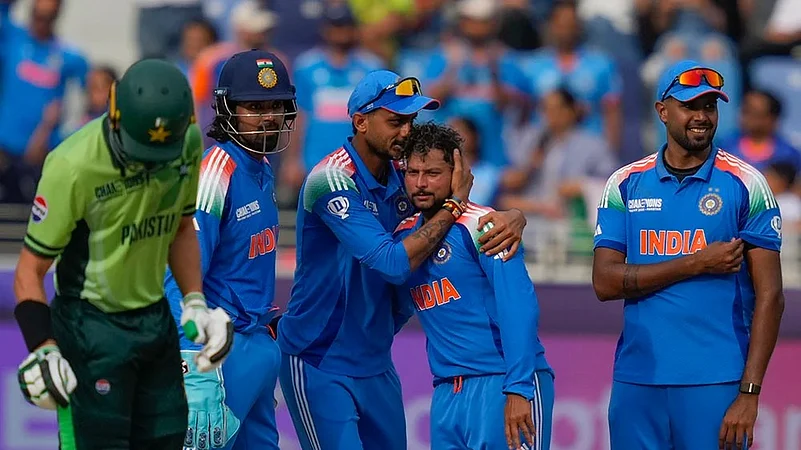
In modern limited-overs cricket, the powerplay overs are among the most exciting phases of the game. With fielding restrictions in place, these overs provide batsmen an opportunity to score quickly, while bowlers must adapt to contain runs and take early wickets. Understanding powerplay rules is essential for fans, players, and analysts alike, as it shapes match strategies and outcomes.
In this blog, we break down the powerplay cricket rules, types, and their impact on T20 and ODI matches, including insights from tournaments like the Indian Premier League (IPL).
1. What Are Powerplay Overs?
A powerplay is a set of overs in limited-overs cricket during which fielding restrictions apply. These restrictions are designed to encourage aggressive batting and entertainment for fans.
- Limited-overs matches: 50 overs (ODI) or 20 overs (T20) per innings.
- Duration: Powerplays usually occur at the beginning of the innings but may also appear in the middle in ODI cricket.
- Objective: Encourage batsmen to take calculated risks while putting pressure on the bowling side.
2. Powerplay in T20 Cricket (Including IPL)
In T20 cricket, including the IPL:
- The first six overs of the innings are designated as the powerplay.
- Only two fielders are allowed outside the 30-yard circle during these overs.
- Batsmen aim to maximize scoring opportunities without losing early wickets.
- Bowling strategies often include tight lines, variations, and calculated aggression.
The powerplay in T20 is crucial because teams aim to score 40–60+ runs in the first six overs, giving momentum for the middle and death overs.
3. Powerplay in ODI Cricket
In ODI cricket, powerplays are divided into three categories:
a) Mandatory Powerplay (Overs 1–10)
- Fielding Restrictions: Only two fielders outside the 30-yard circle.
- Encourages openers to play aggressively and take advantage of the early fielding setup.
b) Batting Powerplay (Overs 11–40 in older rules)
- Teams choose 5 overs where only three fielders are allowed outside the circle.
- Provides flexibility for batting teams to accelerate scoring strategically.
c) Bowling Powerplay
- Certain overs allow more fielders outside the circle, giving bowlers a tactical advantage.
These ODI powerplay rules ensure a balance between aggressive batting and tactical bowling, making the match more competitive and entertaining.
4. Fielding Restrictions During Powerplay
The primary rule in powerplays involves fielding placement:
- T20 Cricket: Maximum of 2 fielders outside the 30-yard circle.
- ODI Cricket: 3 types of fielding restrictions apply based on the powerplay phase.
- Purpose: Prevents defensive field placements and encourages attacking play.
Fielding restrictions influence shot selection, rotation of strike, and risk-taking by batsmen. Successful exploitation of these rules often defines winning strategies.
5. Strategic Importance of Powerplay
Powerplays are critical to match outcomes for several reasons:
a) Momentum Building
- Early partnerships help set a high run rate.
- Teams that dominate the first six overs often gain psychological advantage over opponents.
b) Wicket-Taking Opportunities
- Bowlers aim to take early wickets by exploiting batsmen’s aggressive approach.
- Early dismissals reduce scoring potential in the middle and death overs.
c) Tactical Decision Making
- Captains can rotate bowlers, adjust field placements, and plan for middle overs based on powerplay performance.
A strong powerplay strategy is often the difference between winning and losing in T20 and ODI matches.
6. Common Powerplay Strategies
a) For Batsmen
- Target Loose Deliveries: Maximize scoring with boundaries or quick singles.
- Rotate Strike: Avoid dot balls to maintain pressure on bowlers.
- Complementary Partnerships: Aggressor and anchor combination to maintain momentum and reduce risk.
b) For Bowlers
- Line & Length Discipline: Minimize scoring opportunities in gaps.
- Variation in Pace: Mix slower balls, yorkers, and swing deliveries.
- Pressure Tactics: Force batsmen into errors by consistent dot balls and field placement.
These strategies maximize the impact of powerplay overs for both sides.
7. Powerplay Records and Highlights
- Fastest Powerplay 50s: Many IPL matches have seen openers scoring 50+ in just 3–4 overs.
- Best Partnerships: Partnerships like Virat Kohli & AB de Villiers for RCB and David Warner & Jonny Bairstow for SRH highlight the powerplay’s significance.
- Bowling Impact: Bowlers like Jasprit Bumrah, Rashid Khan, and Trent Boult have dominated powerplays with early wickets and economical overs.
Records show that powerplay dominance often determines match winners.
8. Common Misconceptions
- Powerplay is just for batting: Bowlers play an equally crucial role by strategically controlling runs and taking early wickets.
- Only T20 has powerplays: ODIs also have structured powerplay phases with varying fielding restrictions.
- Over-aggression guarantees success: Smart and calculated aggression yields better results than reckless shots.
Understanding these rules ensures fans and players appreciate the strategic depth of powerplays.
Conclusion
Powerplay overs are the most dynamic phase of limited-overs cricket. By enforcing fielding restrictions and encouraging aggressive batting, powerplays create excitement and tactical depth. Teams that understand and exploit these rules—through smart batting, strategic partnerships, and disciplined bowling—often dominate matches.
Whether it’s T20 cricket in the IPL or ODI internationals, powerplays are a true test of skill, strategy, and mental strength. Mastering the rules and strategies of powerplay cricket is essential for players, captains, and fans who want to fully appreciate the thrills of modern cricket.
